It has been 250 years since naturalist Joseph Banks sailed to the Pacific with James Cook aboard HMB Endeavour. During the voyage, Banks and his team made the first scientific collections of Australian flora. Their specimens were sketched by Sydney Parkinson, whose pioneering illustrations were published last year.

Tales of Snugglepot and Cuddlepie, first published in 1918, is the most famous book by English-born Australian illustrator and author Gibbs, who died in 1969. It is the first of her much-loved series featuring characters based on Australian plants, with the gumnut babies Snugglepot and Cuddlepie inspired by Eucalyptus species. The fruiting heads of the Banksia species became the “big bad” Banksia Men. So it was through Gibbs’ book that generations of children first heard of Banksia, a plant genus found throughout Australia. Today some 171 species are known, 150 from Western Australia, Gibbs’ home for many years.
The name Banksia was coined in 1782 to commemorate English landowner and naturalist Sir Joseph Banks, who travelled on Cook’s first Pacific voyage. Among the plant specimens he collected were the first Banksia specimens seen in Europe. Indeed, his rich botanical haul led the great Swedish naturalist Carl Linnaeus to suggest New Holland, today’s Australia, should also be called Banksia.
BANKS WAS the only son of a wealthy landowner. He had such a passion for botany that, as a University of Oxford undergraduate, he brought in his own botany tutor from rival university Cambridge. In January 1767, Banks returned from a Canadian expedition and spent the year as a dilettante naturalist and antiquarian.
During this year, he made many connections with people who were soon to play crucial roles in the very beginnings of scientific classification of plants in Australia.
Banks set up a house in London, the furnishings for which included work by upholsterer Stanfield Parkinson, whose brother Sydney was employed by Banks to draw animal specimens he had brought from Newfoundland. It is thought Sydney had been trained in natural-history illustration in his home town of Edinburgh.
この記事は Australian Geographic Magazine の July-August 2018 版に掲載されています。
7 日間の Magzter GOLD 無料トライアルを開始して、何千もの厳選されたプレミアム ストーリー、9,000 以上の雑誌や新聞にアクセスしてください。
すでに購読者です ? サインイン
この記事は Australian Geographic Magazine の July-August 2018 版に掲載されています。
7 日間の Magzter GOLD 無料トライアルを開始して、何千もの厳選されたプレミアム ストーリー、9,000 以上の雑誌や新聞にアクセスしてください。
すでに購読者です? サインイン

SULAWESI SENSATIONS
There are worlds within worlds and marvels untold waiting to be experienced on Indonesia's remote islands.
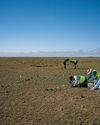
SEARCHING FOR AUSSIE DINOSAURS
Our understanding of where to find ancient life in Australia has been turned on its head by a new appreciation of the country's geology. Now the world is looking to our vast outback as the latest hotspot to locate fossils.
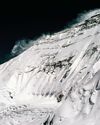
THE HARDEST NIGHT
The first Australian ascent of Mt Everest in 1984 is one of the great feats of mountaineering. Climbed by a small team semi-alpine style, with no bottled oxygen, via the Great (Norton) Couloir, it remains unrepeated 40 years later.
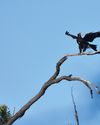
WEDGE-TAILED WONDER
The chance discovery of an eagle nest leads to an extended vigil observing normally hidden behaviours of one of nature's supreme winged marvels.
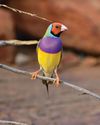
BURDENED BY BEAUTY
Northern Australia's Gouldian finch survives in huge numbers in cages around the world, but its wild population continues to struggle.
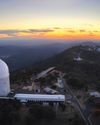
A TELESCOPE FOR A GOLDEN AGE
After a stellar 50 years as one of the country's major scientific assets, the AAT continues to play a major role in keeping Australian astronomy on the world stage.
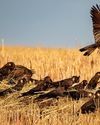
COCKY WHISPERING AT COOMALLO CREEK
This patch of remnant bush on the edge of the West Australian wheatbelt is a place loved by one of Australia's rarest bird species and the man who has studied the site for more than 50 years.

A PIONEERING PAIR
Louisa Atkinson and her mother, Charlotte, were among Australia's earliest authors, and pioneers in women's rights.
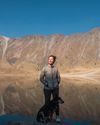
THE LONGEST WALK
Lucy Barnard is walking from Argentina to Alaska -the length of the Americas - on an extraordinary journey of endurance and adventure.
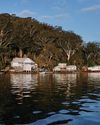
SECLUDED, BUT NOT ALONE
In an era of heightened social isolation, where many of us lead lonely lives, Dangar Island offers the chance to be part of a supportive, connected community.